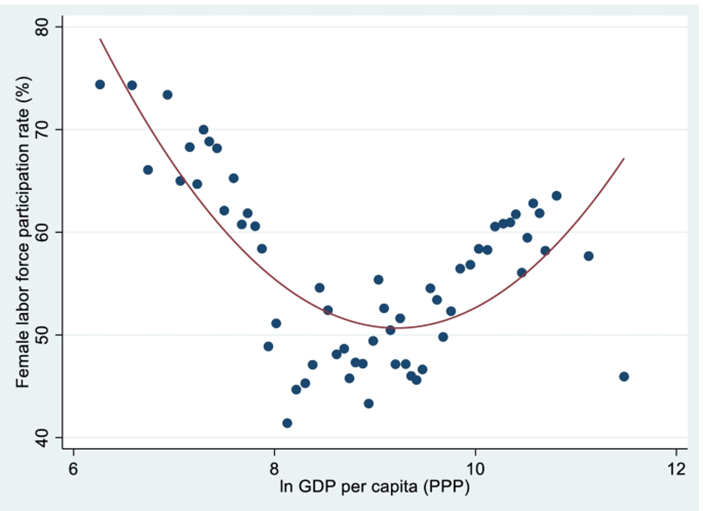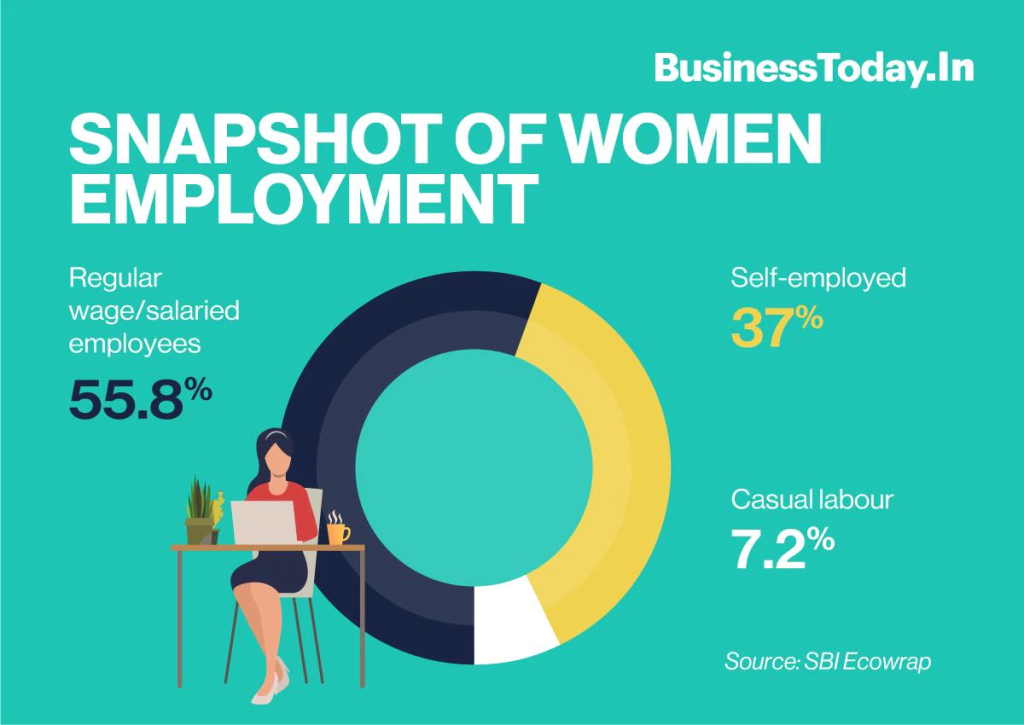Despite Higher Education, Women's Participation in Labour Remains Low
- Ananya Jalan

- Jan 29, 2023
- 3 min read
Traditionally, education is seen as the path to a better social and economic life, to be the end to all hardships. Along the same positive lines, women's education levels have increased in India. Though the proportion of women is less than half of the population, more than fifty percent of fresh graduates are women. While this should be an indicator of the positive growth of society, shockingly enough, it has yet to translate into more women's participation in the workforce in rural and urban areas.
From the Global perspective, there has been research done on this due to the far-reaching impact women's employment has on economic growth. According to the U-shaped hypothesis, several economists sincerely subscribe to, female labor participation is the highest in the poorest countries and decreases as the economy grows. In developing countries, participation falls and then gradually increases again. The same pattern has also been observed in countries like the USA and Turkey. While this observation has been contested, some believe it to be a plausible explanation, although it oversimplifies several complex factors.

There is a multitude of reasons that could be contributing to this seemingly abnormal observation. A few of them can be many women in rural areas pursuing higher education and are simply unavailable for labor. Also, as qualifications increase, many people feel overqualified for several jobs available in the informal sector. In the past few years, household incomes have also increased, eliminating the necessity for women to seek employment during economic hardships. Research has shown that as the mean household wages increase, the probability of women participating in the workforce diminishes. While many might assert that these reasons depict reluctance to work and are not economic indicators, surveys have shown that women are willing to work if given the right opportunities. It has also been seen that the quality of available jobs matters to women as they become more educated. Women typically prefer jobs that are less risky and more desk work. Female participation is adversely affected by the lack of equal employment opportunities created despite steady growth in the GDP.

Social and cultural factors also play a crucial role in influencing women's participation in the labor force. While the decision to seek jobs should ideally be entirely up to the woman, it is assumed that several social and religious institutions play a decisive part. The presence of young children in a household harms participation more in urban areas than rural ones, and it enforces the old conception that the primary duty of a woman is that of a caregiver. In rural and urban areas, marriage has a strong negative impact on female labor force participation. A strange yet plausible explanation for this decline in workforce population is that families often educate their women not for employment but rather for marriage. It is a common assumption that better qualifications would lead to finding a preferable suitor. Another socio-cultural factor that negatively affects female labor participation is that families often believe working women in the household breed a negative image in society, preventing them from joining the labor force. Another concern is that students need to be taught the skills required for 21st-century jobs in educational facilities. This implies that even for the available positions, young people need to receive adequate expertise.
Several other hidden factors could influence these decisions, but this trend must change sooner rather than later. Women's employability is a critical part of women's empowerment. It plays an integral role in the financial independence and stability of women. History has shown that society progresses sustainably when all its members are socially and economically equal. For India to evolve and grow, the number of women participating in the workforce must increase proportionately as the GDP grows.
-Ananya Jalan



Comments